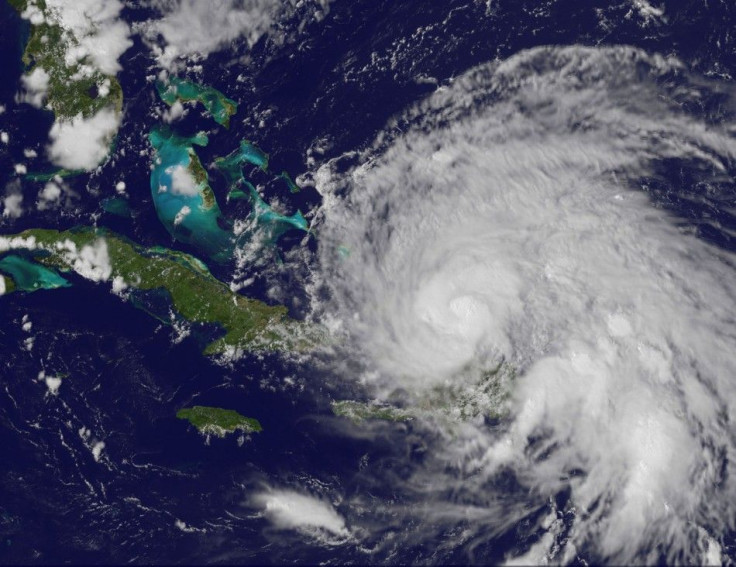Threat of Irene Exposes New York's Vulnerability

In the annals of natural disasters, it doesn't get much worse than a major hurricane directly striking New York City and Long Island.
Hurricane Irene is on a course that will take it up the East Coast from the weekend. While there is still uncertainty about where it will hit and when, the forecast models increasingly suggest some parts of the greater New York area will face some type of storm or hurricane impact. [ID:nN1E77N00M]
According to New York City's Office of Emergency Management, the last hurricane to pass directly over the city was in 1821 -- and it caused tides to rise 13 feet in one hour, flooding all of lower Manhattan to Canal St.
But for Long Island, the threat is much worse. People still talk about the Long Island Express of 1938, a Category 3 storm that the U.S. government has said would cause $40 billion in damage if it hit today.
Meteorologists say the risk appears most acute for areas like the Hamptons, an eastern Long Island playground for New York's rich.
If the storm followed the exact track of it, there could be considerable wind damage and tidal flooding out in those areas, said James Aman, senior meteorologist with WeatherBug. There potentially could be some storm surge problems out around the eastern tip of Long Island, Rhode Island, Cape Cod, some of the areas around Boston that face Massachusetts Bay.
Estimating the damage such an impact would cause is difficult without knowing the storm's parameters, like wind speed, rainfall totals, direction and the like. Some are already taking a ballpark guess, though.
If Irene hits Long Island or southeast Massachusetts, the storm has the potential to be a $10 billion disaster, Weather Underground's Jeff Masters said in a blog post Wednesday.
If Masters is right, that would make the insured losses from Irene some of the worst in history, at a time that insurers are already stretched by record-breaking natural disasters around the world.
<^^^^^^^^^^^^^^^^^^^^^^^^^^^^^^^^^^^^^^^^^^^^^^^^^^^^^^^^
Reuters Hurricane Tracker r.reuters.com/san78n
National Hurricane Center www.nhc.noaa.gov
Florida State map (external link) bit.ly/odn5OY
^^^^^^^^^^^^^^^^^^^^^^^^^^^^^^^^^^^^^^^^^^^^^^^^^^^^^^^^^>
DAMAGING THE RICH
High net worth insurers like AIG (AIG.N) and Chubb (CB.N) are big players in those kinds of upper-class regions, where insured losses can total up quickly due to high property values as well as extensive collections of art and jewelry.
They are scrambling now to warn their customers to be prepared, to take the kinds of precautions that people in places like Florida take for granted.
Without the repetition of events like the folks in Florida benefit from, that preparedness is not front and center, said Michael Taylor, executive vice president for claims in the consumer unit at Chartis, the property insurance arm of AIG.
Taylor said Chartis has been in touch with its brokers, asking them to contact customers and remind them of hurricane preparedness tips that they already receive yearly but might otherwise disregard.
There is only so much preparedness can do, though. Taylor said even the homes of the wealthy sometimes don't feature things like hurricane-strength glass and wind shutters, which are standard in parts of Florida but less common in the northeast.
These are things that will make homes a little more susceptible here, if we do have high winds, he added.
Those winds could be a problem for New York City in particular, a number of experts say.
Florida State University has created an online map that shows the track of 14 different models, two of which show the Irene plowing straight through New Jersey and putting New York City, Newark and other areas on the wrong side of the storm.
Given how compact Manhattan is, even tropical storm-force conditions could do serious damage.
The water's got to go somewhere and the wind is going to hit something, said Lou Gritzo, research manager at insurer FM Global. New York City becomes a wind tunnel when the wind whips between the buildings, so that's going to be a force that intensifies how projectiles are moving.
$100 BILLION DISASTER
In fact, ask any scientist who models catastrophes for a living what it would take to create a $100 billion natural disaster, and their list will almost always include a major hurricane (Category 3 or higher) hitting New York City.
We haven't had a storm in this area for quite some time and it's difficult to say how tested some of these buildings are against hurricane force winds, said Matt Nielsen, product manager for the U.S. hurricane model at catastrophe modeling company RMS.
The city's emergency management office featured Irene front and center on its website Wednesday, urging people to know whether they were in a designated hurricane risk zone and to know the proper evacuation routes out of the city.
Even if Irene passes far enough away from the city and the New York region to spare a full-force impact, flooding can still be a significant problem, especially with tides expected to be high anyway over the weekend due to a new moon.
Four of the six most significant flood events of the last 30 years, based on the amount paid out by the National Flood Insurance Program in claims, included the New York region -- Hurricane Ivan in 2004, Hurricane Isabel in 2003, Tropical Storm Allison in 2001 and Hurricane Floyd in 1999.
Paid claims from those four storms, just for flooding, topped $3.5 billion, according to data compiled by the Insurance Information Institute.
© Copyright Thomson Reuters 2024. All rights reserved.




















